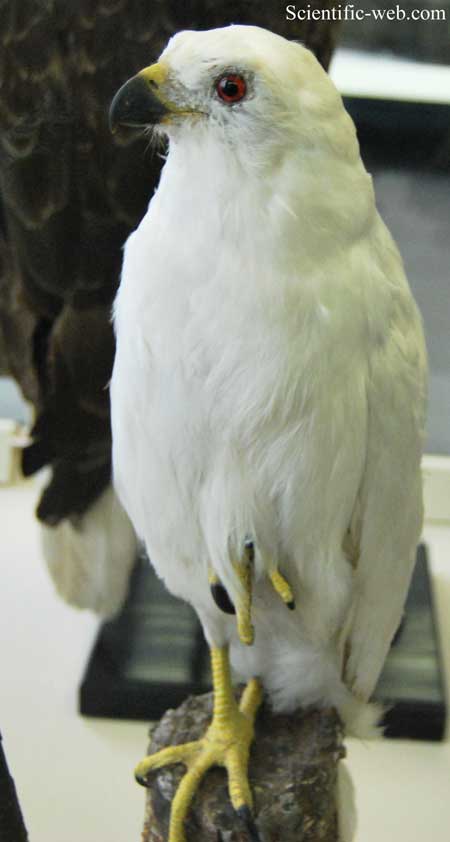
Accipiter novaehollandiae, Photo: Michael Lahanas
Superregnum: Eukaryota
Regnum: Animalia
Subregnum: Eumetazoa
Cladus: Bilateria
Cladus: Nephrozoa
Superphylum: Deuterostomia
Phylum: Chordata
Cladus: Craniata
Subphylum: Vertebrata
Infraphylum: Gnathostomata
Superclassis: Tetrapoda
Cladus: Reptiliomorpha
Cladus: Amniota
Classis: Reptilia
Cladus: Eureptilia
Cladus: Romeriida
Subclassis: Diapsida
Cladus: Sauria
Infraclassis: Archosauromorpha
Cladus: Crurotarsi
Divisio: Archosauria
Subsectio: Ornithodira
Subtaxon: Dinosauromorpha
Cladus: Dinosauria
Ordo: Saurischia
Cladus: Theropoda
Cladus: Neotheropoda
Infraclassis: Aves
Cladus: Euavialae
Cladus: Avebrevicauda
Cladus: Pygostylia
Cladus: Ornithothoraces
Cladus: Euornithes
Cladus: Ornithuromorpha
Cladus: Ornithurae
Cladus: Carinatae
Parvclassis: Neornithes
Cohors: Neognathae
Ordo: Accipitriformes
Familia: Accipitridae
Genus: Accipiter
Species: Accipiter novaehollandiae
Name
Accipiter novaehollandiae (Gmelin, 1788: 264) [org. comb. Falco novaehollandiae]
References
Gmelin, J.F. 1788. Caroli a Linné systema naturae per regna tria naturae, secundum classes, ordines, genera, species, cum characteribus, differentiis, synonymis, locis. Tomus I. Editio decima tertia, aucta, reformata. - pp. i-xii, 1-500. Lipsiae. (Beer). DOI: 10.5962/bhl.title.545 BHL Reference page. [original description: p. 264]
Vernacular names
azərbaycanca: Parlaq qırğı
čeština: Jestřáb proměnlivý
Deutsch: Weißbrauenhabicht
English: Grey Goshawk
español: Azor pálido
français: Autour blanc
magyar: Gyíkászhéja
Bahasa Indonesia: Alap-alap putih
italiano: Astore grigio
Nederlands: Grijze havik
polski: Krogulec australijski
русский: Светлый ястреб
svenska: Grå duvhök
The grey goshawk (Accipiter novaehollandiae) is a strongly built, medium-sized bird of prey in the family Accipitridae. The white morph of this species is known as the white goshawk.
Description
White morph
A white goshawk.
The grey morph has a pale grey head and back, dark wingtips, barred grey breast and tail, and white underparts. The white morph is the only bird of prey in the world to be entirely white.
Grey goshawks are the largest Accipiters on mainland Australia, at about 40 to 55 cm (16 to 22 in) long, with wingspans of 70 to 110 cm (28 to 43 in).[2] Females are much larger than males, weighing about 720 g (1.59 lb) on average (and sometimes scaling up to 990 g (2.18 lb)) while males average 355 g (12.5 oz).[2][3] The population on the Solomon islands is much smaller however, with a female found to have weighed 245 g (8.6 oz) and two males averaging 180 g (6.3 oz).[3]
Distribution and habitat
The grey goshawk is found along the coasts of northern, eastern and south-eastern Australia, Tasmania and rarely Western Australia. The variable goshawk was previously considered a subspecies.
Their preferred habitats are forests, tall woodlands, and timbered watercourses.
Hunting
Grey goshawks often seem to vary their prey selection opportunistically. For an Accipiter, they relatively often select mammals such as rabbits, possums, and bats. Other prey can include small reptiles, and insects. However, the most frequent prey type are most often birds. Evidence from different parts of the range shows females select larger prey than males, with males largely keeping to small to mid-sized passerines while females often prey on larger prey such as currawongs, gamebirds (including megapodes) and even herons. Pigeons and parrots are a popular prey item for grey goshawks. Evidence indicates that this species is less agile in the air and less skilled at twisting pursuits over the ground than co-occurring brown goshawks but, on the other hand, the grey species is more powerful and so select typically larger prey.[2][4][5]
Hunting is often done by stealth, but grey goshawks are willing to pursue their prey before catching it with their talons.
Breeding
Grey and white goshawks interbreed freely. They partner for life, breeding from July to December. They nest in tall trees on a platform of sticks and twigs with a central depression lined with green leaves. The female lays a clutch containing 2 or 3 eggs, which are incubated for about 35 days. Chicks fledge 35–40 days after hatching.
The female is usually responsible for incubating the eggs and feeding the young. The male does most of the hunting.[6]
Conservation status
State of Victoria (Australia)
The grey goshawk is listed as threatened on the Victorian Flora and Fauna Guarantee Act 1988. [1] Under this Act, an Action Statement for the recovery and future management of this species has not been prepared.[2]
On the 2007 advisory list of threatened vertebrate fauna in Victoria, this species is listed as vulnerable.[7]
State of Queensland
This species is listed as least concern in Queensland[8]
References
BirdLife International (2016). "Accipiter novaehollandiae". IUCN Red List of Threatened Species. 2016: e.T22727714A94958201. doi:10.2305/IUCN.UK.2016-3.RLTS.T22727714A94958201.en. Retrieved 11 November 2021.
Ferguson-Lees, J.; Christie, D. (2001). Raptors of the World. Houghton Mifflin Harcourt. ISBN 0-618-12762-3.
CRC Handbook of Avian Body Masses, 2nd Edition by John B. Dunning Jr. (Editor). CRC Press (2008), ISBN 978-1-4200-6444-5.
Olsen, P. D., Debus, S. J. S., Czechura, G. V., & Mooney, N. J. (2016). Comparative feeding ecology of the grey goshawk Accipiter novaehollandiae and brown goshawk Accipiter fasciatus. Australian Field Ornithology, 13(6).
Cupper, J., & Cupper, L. (1981). Hawks in focus: A study of Australia's birds of prey. Harrell Books.
"Birds in Backyards - Grey Goshawk". Archived from the original on 2007-12-14. Retrieved 2007-04-14.
Victorian Department of Sustainability and Environment (2007). Advisory List of Threatened Vertebrate Fauna in Victoria - 2007. East Melbourne, Victoria: Department of Sustainability and Environment. p. 15. ISBN 978-1-74208-039-0.
"Species profile—Accipiter novaehollandiae (grey goshawk)". Environment, land and water - Queensland Government. Queensland Government. Retrieved 28 December 2020.
Marchant, S.; & Higgins, P.J. (Eds). (1993). Handbook of Australian, New Zealand and Antarctic Birds. Vol,2: Raptors to Lapwings. Oxford University Press: Melbourne. ISBN 0-19-553069-1
Retrieved from "http://en.wikipedia.org/"
All text is available under the terms of the GNU Free Documentation License

